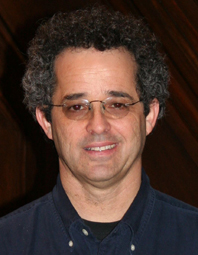
Leo Corry, Ph.D.
Professor der Wissenschaftsgeschichte, Direktor
Universität Tel Aviv
The Cohn Institute for the History & Philosophy of Science & Ideas, Tel Aviv University
Born in 1956 in Santiago de Chile
Studied Mathematics at the Universidad Simón Bolivar, Caracas and Mathematics and History and Philosophy of Science at Tel Aviv University
Arbeitsvorhaben
Harry Schutz Vandiver und die rechnerische Annäherung an Fermats letztes Theorem
Fermat's Last Theorem (FLT) is a rather esoteric mathematical result, devoid of any applications, in or outside mathematics. At the same time, the statement of the theorem requires no specific mathematical knowledge to be fully comprehended. The theorem was definitively proved in 1994 as a consequence of Andrew Wiles' proof of the Taniyama-Shimura conjecture. FLT and its history immediately became a widely publicized media item.However, contrary to its public image, FLT was a problem to which mathematicians devoted very little serious research effort throughout the years. Harry Schutz Vandiver (1882-1973) was among the very few mathematicians that made considerable progress in research related to the proof of FLT between 1900 and 1970. Still, his approach to this problem has very little in common with the approach that finally led to Wiles' way of attack. His name was completely forgotten from the "victory parades" that followed Wiles' achievement.
Based on a wealth of unpublished archival material I will attempt a reconstruction of Vandiver's mathematical world and the place of FLT within it. In particular, I will focus on his use of calculation devices, including electronic computers after 1950, in a mathematical field where most practitioners at that time would have considered this as sacrilegious.
This planned research will address questions related with intra-disciplinary development of mathematical ideas, as well as with the internal dynamics of the mathematical community and the formation of research traditions.
Recommended Reading
Corry, Leo. Modern Algebra and the Rise of Mathematical Structures. Basel and Boston: Birkhäuser, 1996. (Science Networks Vol. 17.) Second, revised edition: October 2003.
-. The Literary World of Jorge Luis Borges (in Hebrew). Tel Aviv: Ministry of Defense Publications: The Broadcast University, 1997.
-. David Hilbert and the Axiomatization of Physics (1898-1918): From "Grundlagen der Geometrie" to "Grundlagen der Physik". Dordrecht: Kluwer, 2004. Also published in: Archimedes. New Studies in the History and Philosophy of Science and Technology 10 (2004).
Kolloquium, 06.04.2006
Fermat's Last Theorem: How a marginal remark became an important mathematical problem. ... Or did it?
Der große Fermatsche Satz (oder auch: Fermats letztes Theorem) ist ein eher esoterisches mathematisches Ergebnis, das bar jeder Anwendung innerhalb oder außerhalb der Mathematik ist. Gleichzeitig liegt die Formulierung des Theorems durchaus in der Reichweite von Laien, denn es bedarf keines mathematischen Fachwissens, um sie zu verstehen. 1994 wurde das Theorem in Andrew Wiles' brillanter Arbeit zur sog. Taniyama-Shimura-Vermutung endgültig bewiesen.
Der große Fermatsche Satz und dessen Geschichte wurden zum Gegenstand medialen Interesses: 300 Jahre nach seiner Formulierung war ein mathematisches Rätsel nun endlich gelöst. Der Geist der allgemein akzeptierten Geschichte rund um das Theorem wird auch in der folgenden Passage spürbar, die aus einem populärwissenschaftlichen Bestseller stammt:
Die Geschichte des großen Fermatschen Satzes ist unauflöslich mit der Geschichte der Mathematik verknüpft und berührt alle wichtigen Gebiete der Zahlentheorie. (...) Im Kern ist der große Fermatsche Satz eine fesselnde Geschichte über den Mut, über Gemeinheit und List, eine Tragödie, in der alle großen Helden der Mathematik eine Rolle spielen.
Doch die historischen Dokumente zum großen Fermatschen Satz zeichnen ein anderes, sehr viel weniger dramatisches Bild. Tatsächlich erregte das Theorem eine gewisse Neugier; dennoch war der große Fermatsche Satz ein Problem, dem die Mathematiker/innen - und insbesondere die führenden Spezialisten der Zahlentheorie - über die Jahre, wenn überhaupt, nur sehr wenig ernsthafte Forschung widmeten.
In meinem Vortrag möchte ich mich mit drei zusammenhängenden Fragen befassen:
1. Wodurch wird ein Problem mehr oder weniger wichtig für Mathematiker/innen, und wie verändern sich ihre Kriterien im Verlauf der Zeit?
2. Für wie wichtig wurde der große Fermatsche Satz seit seiner Fomulierung gehalten?
3. In welcher Weise wurde die Geschichte dieses Theorems über die Jahre erzählt - und insbesondere nach Wiles' Beweis?
Bemerkung: Das Verständnis des Vortrags bedarf nur minimaler (wirklich minimaler) mathematischer Kenntnisse.
Publikationen aus der Fellowbibliothek
Corry, Leo (2005)
Science in context ; 18 Science in context ; 18
Corry, Leo (2005)
Introdructions: science in Latin-American contexts - historical studies
Corry, Leo (2004)
Science in context ; 17 Science in context ; 17
Corry, Leo (2004)
Introduction: the history of modern mathematics - writing and rewriting
Corry, Leo (Dordrecht [u.a.], 2004)
David Hilbert and the axiomatization of physics (1898 - 1918) : from Grundlagen der Geometrie to Grundlagen der Physik Archimedes ; Vol. 10
Corry, Leo (Basel, 2004)
Modern algebra and the rise of mathematical structures
Corry, Leo (2003)
Corry, Leo ([Tel Aviv], 1998)
Olamo ha-sifruti shel Horheh Lu'is Borhes Sifriyat "universitah meshuderet"
